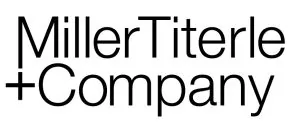Introduction
This Practice Guide is the first of two Practice Guides which provide a general overview of potential applications of Canadian securities and other legal requirements to take-over bids occurring, in part, in Canada. In particular, it summarizes requirements that may be applicable to a take-over bid (tender offer) or issuer bid (issuer self tender) for securities of a target company that is governed by Canadian corporate law or is a reporting issuer under Canadian securities laws. The two Practice Guides represent a summary overview of many of the topics discussed. In many cases there are detailed rules where reference by necessity must be made to the text of the applicable rules.
Certain terms that are used in this Practice Guide (in bold font) which are defined in applicable securities legislation, rules, regulations or other instruments have the meanings so defined, without the definition necessarily being included or summarized in this Practice Guide.
Canadian public M+A transactions are most typically effected either by way of a take-over bid or a business combination under a statutory procedure (e.g., amalgamation or plan of arrangement) under the target company’s governing statute. The latter transactions are described in the “Statutory Business Combination Transactions - Overview” Practice Guide.
Take-Over Bids (Tender Offers) and Issuer Bids
Take-Over Bids
Definition. A take-over bid is generally defined as an offer to acquire outstanding voting securities or equity securities made to one or more persons, any of whom is in a Canadian province or territory or whose address as shown on the books of the offeree issuer is in a Canadian province or territory, where the securities subject to the offer to acquire, together with the offeror’s securities, constitute in the aggregate 20% or more of the outstanding securities of that class. Take-over bid rules (and early warning requirements discussed below) require aggregation and inclusion of securities that are owned or controlled by certain affiliates, associates, joint actors and other persons. In addition, in calculating beneficial ownership of securities of an offeror or a person acting jointly or in concert with an offeror, securities which are convertible into voting securities or equity securities within 60 days, or which the offeror or joint actor has the right or obligation to acquire, whether or not on conditions, within 60 days, must be included (on a partially diluted basis). Where a person already beneficially owns, or controls or directs, 20% or more of the outstanding voting securities or equity securities, the acquisition of a single additional security can be a take-over bid.
Application to indirect offers. The take-over bid rules apply to both direct and indirect offers to acquire and direct or indirect acquisitions of ownership of, or control or direction over, securities.
Statutory Business Combination Transactions Not Included. An offer to acquire securities included as a step in an amalgamation, merger, reorganization or arrangement that requires approval in a vote of security holders is not a take-over bid.
Rules for Non-Exempt Bids. In general, unless exempt, a take-over bid must be made to all shareholders on identical terms (i.e. with no ‘collateral benefit’ to any holder) and all holders must be offered identical consideration (or the same choice of consideration) and the bid must be open for acceptance for at least 105 days. The take-over bid is subject to a minimum tender condition that requires more than 50% of the outstanding securities owned by persons (other than the bidder and any joint actors) must be tendered and not withdrawn before the bidder can acquire the securities pursuant to the bid. Further, the bid period must be extended by 10 days after the minimum tender condition, and all other conditions of the bid, have been satisfied or waived. The bidder must provide target company security holders (and holders of convertible securities) with a bid circular containing prescribed information about the offer including, if securities form part of the consideration being offered, prospectus-level disclosure about the acquiror or other person whose securities are being offered. The directors of the target company must also send a circular to target company securityholders that includes the board’s recommendation regarding the bid, or an explanation why the board is declining to make a recommendation.
Regulatory Vetting or Review. Bid circulars, even in the case of a securities exchange take-over bid where securities of the offeror are to be issued to shareholders of the target company, are not generally subject to vetting or clearance or review or receipting by Canadian securities regulators. Securities regulators may selectively review bid circulars (for example, to monitor compliance with applicable disclosure or other requirements). This is probably more likely to occur if regulators receive complaints from a target company (or possibly a competing prospective offeror) regarding deficiencies in the bid circular, and is not very common in the case of friendly bids. If, in connection with a take-over bid, the offeror is seeking a discretionary exemption order in some jurisdictions, a regulator might be more likely to review the bid circular and the disclosure contained therein. This, for example, might occur, in the case of a securities exchange take-over bid, where the offeror may need to seek a discretionary order in some jurisdictions in order to become a reporting issuer after the offer. Finally, securities regulators have power to intervene in the public interest (for example, to cease trade a take-over bid) if they consider it to be abusive or contrary to public interest. The regulators have, on occasion, indicated they may be willing to intervene on this basis in situations where they believe a transaction may be contrary to the spirit and intent, or “animating principles” underlying the take-over bid rules, even if the transaction is in technical compliance.
English and French. Both the bid circular and directors’ circular must be in English and also in French if the bid is being made in Québec (unless a de minimus or other exemption from Québec French language requirements is available or obtained in Québec) and must be filed (but is not subject to pre-clearance review).
Other Restrictions. Canadian take-over bid rules also include restrictions on purchases of target company securities during (subject to certain permitted purchases provided specified conditions are satisfied), and after a bid. Also, pre-bid integration rules require the consideration in a formal bid to be at least equal to the highest consideration paid under pre-bid (market and private agreement) purchases (excluding certain normal course purchases on a published market or purchases from the issuer) within the preceding 90 days. There are also restrictions against sales of target company securities, or agreements, commitments or understandings to sell target company securities by an offeror during a take-over bid (certain agreements, commitments or understandings to sell are permitted, if the intention to sell is disclosed in the bid circular). Partial bids (for less than all outstanding shares) are permitted, but the same offer must be made to all holders of the same class and securities must be purchased pro-rata. In addition, there are restrictions prohibiting ‘collateral benefits’ which have the effect of providing any holder greater consideration than other holders.
Other Requirements. There are detailed rules governing matters such as time for deposit taking up and paying for, or withdrawal of securities deposited under a take-over bid, changes in information, changes or variations of terms of a bid, and other matters, a summary of which is beyond the scope of this Practice Guide. These include a requirement that, if, during a bid, there is an increase in the value of consideration offered under the bid, the offeror must pay the increased consideration to all holders whose securities are taken up under the bid, including holders whose securities were taken up before the variation.
Conditions. An offeror can attach conditions to bids. Bids are typically conditional upon a specific threshold of acceptance (e.g., 90% or two-thirds, or less frequently, 50%). Canadian securities regulators have indicated that conditions should be bona fide and interpreted in good faith and on a reasonable basis, and that they may intervene where a condition is expressed such that the offeror has sole judgment or discretion as to whether the condition has been satisfied, to ensure that such judgment or discretion is exercised reasonably, honestly, in good faith on reasonable grounds, and not capriciously or arbitrarily. In addition, a take-over bid cannot be conditional upon the bidder obtaining financing, and the bidder must take adequate arrangements for financing of a bid and be confident that, if the bid conditions are satisfied, any financing it has arranged will be available.
Insider Bids. If the offeror is an insider, under Ontario and Quebec securities laws, a valuation of the target company’s securities, and of any non-cash compensation being offered as consideration, may be required, unless an exemption from such requirements may be available.
Issuer bids. An issuer bid is generally defined to mean an offer to acquire or redeem any securities of an issuer (not including non-convertible debt securities) made by the issuer to one or more persons, any of whom is in a Canadian province or territory or whose last address as shown on the books of the issuer is in a Canadian province or territory and includes an acquisition or redemption of securities of the issuer from those persons. Issuer bids must be made pursuant to an issuer bid circular sent to all holders of the applicable class on identical terms. Issuer bids are subject to additional requirements, including a requirement for a valuation of the target company’s securities, unless an exemption may be available.
Corporate Legislation. Acquisitions by a corporation of its own shares are subject to solvency restrictions under Canadian federal and provincial corporate legislation.
Friendly and Unsolicited Bids. Take-over bids are used both in friendly or hostile situations. Friendly bids, where the bidder contacts the target company and seeks to enter into a support agreement (and often lock-up agreements with significant shareholders) leading to the announcement of a negotiated transaction, are most common. Bidders are typically granted due diligence access and enter into a confidentiality agreement, often including a standstill clause, prohibiting the bidder from purchasing shares or publicly announcing a transaction. Hostile take-over bids can, and, in many cases do, subsequently become a non-hostile transaction following a negotiation between the acquiror and the target company (for example, resulting in an increase in the consideration under the offer, and possibly other improvements to the terms of the offer), following which the offeror and the target company may agree to enter into a support agreement pursuant to which the target company agrees to support the take-over bid.
Take-over Bid Defenses. For a hostile bid, the target company often responds with defensive tactics, including seeking a “white knight” (a second bidder to make a superior proposal with whom the target company enters into a support agreement) and implementing a shareholder rights plan (“poison pill”). Defensive tactics are not prohibited by law, but Canadian regulators have intervened when defensive tactics would likely result in holders being deprived of the ability to respond to a bid. For example, regulators have historically cease traded the operation of a shareholder rights plan, rather than permitting such plans to remain in place indefinitely.
Compulsory Acquisition. If the bidder acquires at least 90% of the target company shares (not previously owned) Canadian federal and provincial corporate statutes typically allow the bidder to effect the compulsory acquisition of the remaining shares for the same consideration offered under the bid (subject to the right of the holders to exercise “dissent and appraisal” remedies, demanding to receive fair value for their shares as determined by a court), through a relatively simple statutory process which typically can be completed within 30 days.
Subsequent Acquisition Transaction. If the bidder acquires more than two-thirds of the outstanding shares, but less than 90%, the bidder can usually arrange for the calling of a meeting of the target company’s shareholders (including the bidder) to vote on a second-step business acquisition, that results in the minority shareholders being squeezed out for the same consideration offered under the bid, (again subject to a dissent and appraisal remedy). This takes longer than a 90% compulsory acquisition due to the need to call and hold a meeting. In addition to two-thirds approval being required, minority approval will likely also be required under Ontario and Québec’s requirements (see below).
Income Trusts. If the target entity is a trust governed by a trust declaration, or partnership (e.g., limited partnership) governed by a partnership agreement, rather than a corporate statute, it will be necessary to review the governing trust declaration or partnership agreement to determine whether they include provisions for compulsory acquisition or squeeze out of minority holders following a take-over bid, and if so, the applicable requirements. In some cases it may be necessary to make provisions for a consent solicitation, in connection with a take-over bid, for amendment of the applicable trust declaration or governing agreement.
Additional Information
For a discussion of the following topics, see the “Canadian Take-Over Bid Rules – Overview – Part II” Practice Guide.
- Exempt Bids
- Early Warning and Insider Reporting Requirements
- Prospectus Exemptions for Securities Exchange Offers
- Resale Restrictions
- Impact of Completing a Share Exchange Offer on Reporting Issuer Status
- Additional Filing Requirements
- Foreign Investment Laws and Competition Law
- Other Statutory Regimes







